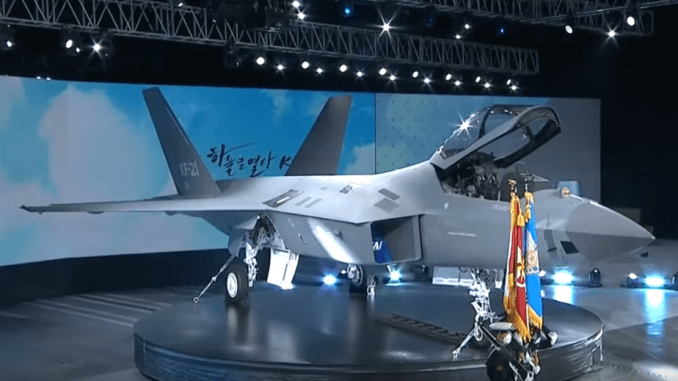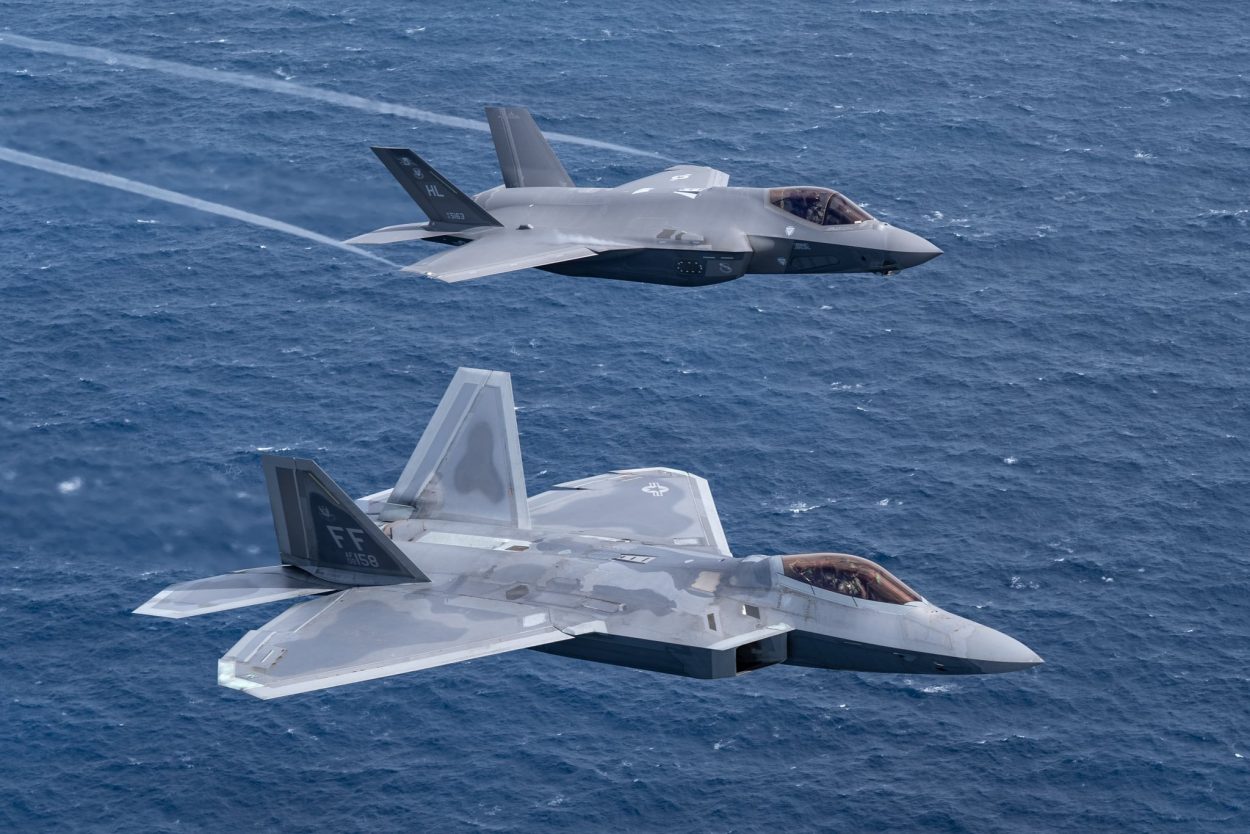Indonesia has reaffirmed its commitment to the South Korea-led KAI KF-21 fighter jet program, which promises to offer a cheaper alternative to the US’ F-35 stealth fighter jet.
US Lures India With ‘Hybrid’ F-21 Fighter Jet That Boasts Capabilities Of Both F-35 & F-22 Raptor
South Korea unveiled a prototype of the KF-21 ‘Boramae’ (Hawk), the country’s first indigenous semi-stealth fighter jet, in April this year. Seoul and Jakarta had in 2015 agreed to invest $7.6 billion on the program, with Jakarta paying 20% of development costs in return for access to technologies, Janes reported.
In view of the Chinese belligerence in the South and East China seas, Indonesia intends to procure 50 KF-21s. Jakarta is also looking to procure air defense and strike variants that Korea Aerospace Industries (KAI) is working on.
While Indonesia is keen to receive the technical know-how through the transfer of technology from its South Korean counterparts, the country’s priority is to protect its maritime borders from Chinese aggression.
Indonesia has also begun defense collaboration with Japan in March. This move has paved towards military exports for the Indonesian Armed Forces from Japan.
Among Beijing’s naval posturing, Natuna islands stand to be particularly troubled waters for Jakarta as it lies at the epicenter of China’s maritime claims. This makes the potential procurement of eight Japanese Mogami-class stealth frigates a prospective Indonesian naval procurement.
These multi-role frigates from Japan would complement the South Korean KF-21s and the combined procurement of these platforms would be a tacit response to Beijing’s designs.
HAL AMCA Of South Korea – The KF-21 Boramae Fighter Jet Makes Its First Appearance: WATCH
The KF-21 Boramae
Research and development of the program, which was christened as KAI KF-X (KF-21 is the designation of the Korean version), began in 2015. The KF-21 fighters would eventually replace the South Korean Air Force’s aging F-4 and F-5 jets.
South Korean President Moon Jae-in, along with an Indonesian delegation, led by Prabowo Subianto, Indonesia’s Defense Minister had attended the inaugural event at KAI’s headquarters in the southern city of Sacheon.
While Indonesia holds a 20% stake in the KF-21 program, the country’s commitment to the project has been questioned amidst payment delays and economic hurdles. Turkey too had shown interest in the program, however, scrapped the idea owing to production sharing issues.
South Korea’s state arms procurement organization, Defense Acquisition Program Administration, said, “If the KF-21 development is successful, the Korean Air Force has an important meaning in that it plays a role in self-defense with domestic aircraft, from training (trainer) to airspace defense (fighter) and provides a foothold to leap to a strong force in the world.”
DAPA notes that the unveiling of the K1-21 stealth fighter has not only been lauded for being the country’s first indigenous stealth fighter but also for the fact that it is the eighth country in the world to have successfully developed an advanced supersonic fighter aircraft of 4.5 generations or above. T
What Does KF-21 Offer
Joseph P Chacko, author and commentator on military and international affairs, told The EurAsian Times, “About 30 odd Indonesian aeronautical scientists have returned to South Korea to work on the KAI KF-21 Boramae project, even though the payment for the country’s share of funding has not been credited to the Koreans.
“The financial implications may not be just limited to that, because of the involvement of Indonesia. Indonesia’s neighbors may be uncomfortable in inducting the aircraft. ASEAN military rivalry along with the rivalry with China would be the deciding factor for such big-ticket acquisitions.”
Chacko further explained that the Korean aircraft has some American fingerprints, “KAI KF-21 Boramae has critical content from the United States, including Lockheed Martin and GE, and is subject to the US export controls.”
While it has widely been reported that the KF-21 is about 65% indigenous, Chacko argues that most of the “subsystems have been either developed with the help of foreign partners or have foreign components within the subsystems.”
When asked about the potential pricing of the fighter and its likely competitors, he said, “The price of the 4.5 generation KF-21 price is expected to be around $65 million per unit and it is in head-on competition with the Russian Su-75 Checkmate 5th generation fighter, which is expected to cost $60-75 million per unit. Russia exerts a considerable amount of clout in the region.”
KF-21 – Salient Features
KF-21 is a 4.5 generation aircraft, which will be used along with the F-35 South Korea is purchasing from the US. The onboard software is developed by the Korean company LIG Nex1 with the help of SAAB and that gives them the flexibility of adapting the payload, according to Chacko.
“The South Koreans can configure the payload as required by the customers. For example, MBDA has been given the contract to integrate the Meteor missile,” says Chacko.
Some analysts say the design of the KF-21 is strikingly similar to the US’ F-22 Raptor although the South Korean jet has been positioned as an alternative to the F-35 Lightning-II.
The KF-21 is expected to replace the South Korean Air Force’s F-5E/F Tiger IIs and F-4 Phantoms as well as some older F-16C/Ds and F-15K Slam Eagles, all of which are nearing the end of their life cycle. The KF-21 also complements the 60 American F-35As that South Korea is purchasing. An estimated 40 KF-21’s are expected to be slated into service by 2028.

It has been speculated that the batch will comprise the Block I air defense Boramae variants. The first prototype unveiled in April will be joined by three more single and two twin-seat jets as part of the pilot program. The time frame given for development before the first KF-21 deliveries begin in 2026 has been described as ambitiously brief.
The R&D has been crunched into a duration between four to five years. While the Korean aircraft resembles the F-35 in many aspects, the KF-21 is a twin, rather than a single-engine fighter jet, the prototypes are powered by a pair of General Electric F414-GE-400K engines. GE will supply 240 F414s for the full fleet of 120 aircraft planned to be in service by 2032.
Is KF-21 Really A Stealth Fighter?
Similar to its F-35 and F-22, the KF-21 will also offer the end-user stealth, however, it cannot match the same degree of radar signature reduction which the US 5th Gen fighter duo offers.
The KF-21 is thought to have a radar cross-section on par with the Eurofighter Typhoon, but planned upgrades should reduce its radar signature considerably, The War Zone reported.
What limits the KF-21’s stealth capability is the decision to carry weapons externally on six under-wing and four under-fuselage hardpoints. However, the lower stealth profile is accounted for through its more economical price range and shorter development duration, which came as a result of forgoing the internal weapons bay.
The weapons for the strike variant are already a part of the ROKAF arsenal. The Paveway II laser-guided bombs, GPS/INS-guided GBU-39 Small Diameter Bombs and GBU-31/38 Joint Direct Attack Munition bombs, plus CBU‐105 Wind Corrected Munitions Dispenser kits are some such munitions.
The aircraft is expected to be able to carry a payload as heavy as 16,975 pounds and maintain a top speed of Mach 1.83 (1,400 miles per hour). The KF-21 seems to have a performance edge over the F-35A in some respects as it boasts an effective range of approximately 1,800 miles.
South Korea’s Hanwha Systems has indigenously produced an active electronically scanned AESA radar, which can complement long-range weapons such as the MBDA’s Meteor air-to-air missile.
This would help extend the Korean air defense range beyond what the F-16 presently offers. This combination provides for an F-35-style deterrent which can augment Korea’s own Joint Strike Fighter fleet and its Boeing E-737 Peace Eye airborne early warning and control aircraft.
The KF-21 despite not being a 5th generation fighter is expected to be able to hold a market edge over its contemporary aircraft from India, United Kingdom, Europe, and Japan as it is cheaper and can be delivered faster. Another market condition, which merits a mention is that the KF-21 comes with no strings attached, however the same cannot be said for the American F-35A or Chinese J-10CE fighter.

The US F-35A requires the end user to integrate within the Joint Strike Fighter ecosystem (excluding the Israelis). Furthermore, customers will be required to take up the software updates and avionics which are selected and controlled by the manufacturer and the US government.
Similarly, the J-10CE may be financially viable, but it comes with heavy-handed Chinese influence. Furthermore, the lack of reliability with regards to the Chinese/Russian fighter is another aspect that sticks out.
With the South Korean aircraft’s critical avionics and associated sensors being developed, customers from across the world may expect more autonomy, a better product and a steady supply if they go with the K-21.




